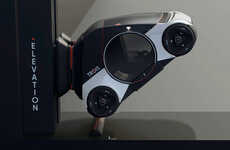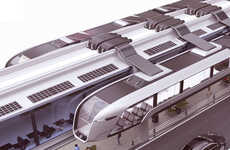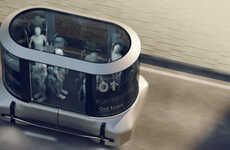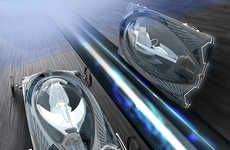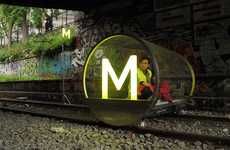
The Maglev Public Transportation Concept by Chris Hanley
Marissa Liu — April 21, 2010 — Autos
References: thedesignblog.org
British designer Chris Hanley has proposed a new concept, the Maglev public transportation system, which is kind of like a cross between a gondola and a Japanese bullet train. The name Maglev is actually short for magnetic levitation, the system on which this transport system is based.
The Maglev public transportation system is emission-free and runs along a suspended track above roads. It uses existing buildings as stations and can rotate 360° to navigate tight turns and narrow passages.
The Maglev public transportation system is emission-free and runs along a suspended track above roads. It uses existing buildings as stations and can rotate 360° to navigate tight turns and narrow passages.
Trend Themes
1. Maglev Public Transportation - The development and implementation of the Maglev public transportation system can revolutionize the industry, providing a more sustainable and efficient transportation alternative.
2. Roadless Transportation - The concept of roadless transportation systems can create new opportunities for innovation and sustainable practices in the transportation industry.
3. Magnetic Levitation Technology - The use of magnetic levitation technology can pave the way for faster and more efficient transportation systems in the future.
Industry Implications
1. Transportation - The Maglev public transportation system can disrupt the traditional transportation industry, potentially leading to more sustainable and efficient options for commuters.
2. Green Technology - The implementation of the Maglev public transportation system promotes a greener and more eco-friendly transportation system, sparking innovation within the green technology sector.
3. Architecture and Urban Planning - The use of existing buildings as stations for the Maglev system creates new opportunities for architects and urban planners to reimagine and integrate transportation infrastructure into urban landscapes.
3.1
Score
Popularity
Activity
Freshness




